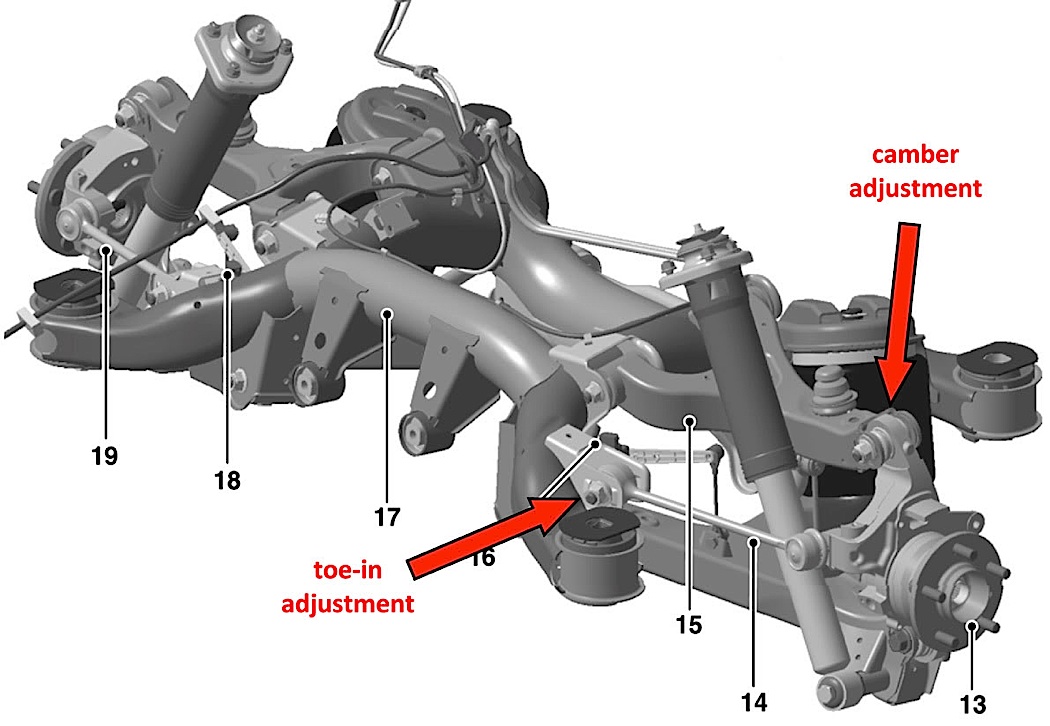To align rear wheels on a car, you need to use a laser alignment tool. This tool helps adjust the wheels accurately by measuring the alignment angles.
Proper alignment ensures optimal performance and safety while driving. Keeping your rear wheels properly aligned can prevent uneven tire wear and improve overall handling and stability on the road. It is essential to regularly check and align the rear wheels to maintain the vehicle’s performance and extend the lifespan of the tires.
By following the correct alignment procedures, you can ensure a smooth and efficient driving experience for your car. Regular maintenance of your rear wheels alignment is crucial for the vehicle’s overall health and performance.

Credit: speed.academy
Importance Of Proper Wheel Alignment
Proper wheel alignment is essential for a car’s performance and safety. When it comes to aligning rear wheels on a car, following the correct steps and measurements is crucial to maintain stability and even tire wear.
| Improved Fuel Efficiency | Increased Tire Lifespan |
| Proper wheel alignment significantly improves fuel efficiency by ensuring the wheels roll in the same direction, reducing resistance. | Correct alignment prevents uneven tire wear, extending the lifespan of the tires and decreasing the frequency of replacements. |
Signs Of Misaligned Rear Wheels
- Uneven tire wear can signal misalignment.
- Steering wheel vibrations indicate rear wheels may be out of alignment.
Preparation For Wheel Alignment
Before aligning rear wheels on a car, ensure to check tire pressure. Inspect suspension components for any signs of wear.
Methods For Aligning Rear Wheels
Aligning rear wheels on a car is crucial for optimal vehicle performance. Thrust angle alignment involves ensuring that the rear wheels are parallel to the car’s center line. This helps in preventing the car from veering to one side. On the other hand, four-wheel alignment involves adjusting the rear wheels to ensure they are perpendicular to the ground and parallel to the front wheels. Proper alignment ensures even tire wear, smooth handling, and improved fuel efficiency.
Step-by-step Guide To Align Rear Wheels
In this step-by-step guide, learning how to align rear wheels on a car is made easy. By following the simple instructions provided, car owners can ensure that their rear wheels are properly aligned, leading to improved vehicle performance and safety on the road.
Secure The Vehicle
To begin, park the car on a level surface and engage the parking brake. Ensure the vehicle is secure to prevent any accidents or injuries during the wheel alignment process. Place wheel chocks in front of and behind the front tires to prevent the car from rolling.
Adjust Camber And Toe
Next, it’s important to adjust the camber and toe of the rear wheels. Camber refers to the vertical tilt of the wheels, while toe refers to their alignment in relation to each other. Using a camber and toe adjustment tool, carefully make the necessary adjustments to ensure they are within the vehicle’s recommended specifications. This will help improve the handling, stability, and tire wear of the car.
Credit: kevinscarrepair.com

Credit: www.atlasspringservice.com
Frequently Asked Questions Of How To Align Rear Wheels On A Car
Can You Do An Alignment On Rear Wheels?
Yes, wheel alignment can be done on the rear wheels to ensure proper vehicle handling and tire wear.
Can I Align My Wheels Myself?
Aligning wheels should be done by a professional for proper alignment and safety. Doing it yourself may lead to inaccurate alignment and potential safety hazards.
How Do You Know If Your Rear Wheel Is Out Of Alignment?
You can tell if your rear wheel is out of alignment by checking for uneven tire wear or vibrations while driving. Another sign is the vehicle pulling to one side. It’s essential to have a professional inspect and correct the alignment to avoid further damage to the vehicle.
How Do I Align My Rear Axle?
To align your rear axle, follow these steps: 1. Park your vehicle on a level surface. 2. Measure the distances between the wheels on each side. 3. Adjust the control arms or rear suspension components to even out the measurements.
4. Double-check the alignment by measuring again. 5. Repeat the process if necessary until the measurements are equal.
Conclusion
Aligning the rear wheels of your car is vital for safety and performance. By following the steps outlined in this guide, you can ensure that your vehicle remains stable and balanced on the road. Regular wheel alignment can also extend the lifespan of your tires and improve fuel efficiency.
Keep your car on the right track with proper rear wheel alignment.
{ “@context”: “https://schema.org”, “@type”: “FAQPage”, “mainEntity”: [ { “@type”: “Question”, “name”: “Can you do an alignment on rear wheels?”, “acceptedAnswer”: { “@type”: “Answer”, “text”: “Yes, wheel alignment can be done on the rear wheels to ensure proper vehicle handling and tire wear.” } } , { “@type”: “Question”, “name”: “Can I align my wheels myself?”, “acceptedAnswer”: { “@type”: “Answer”, “text”: “Aligning wheels should be done by a professional for proper alignment and safety. Doing it yourself may lead to inaccurate alignment and potential safety hazards.” } } , { “@type”: “Question”, “name”: “How do you know if your rear wheel is out of alignment?”, “acceptedAnswer”: { “@type”: “Answer”, “text”: “You can tell if your rear wheel is out of alignment by checking for uneven tire wear or vibrations while driving. Another sign is the vehicle pulling to one side. It’s essential to have a professional inspect and correct the alignment to avoid further damage to the vehicle.” } } , { “@type”: “Question”, “name”: “How do I align my rear axle?”, “acceptedAnswer”: { “@type”: “Answer”, “text”: “To align your rear axle, follow these steps: 1. Park your vehicle on a level surface. 2. Measure the distances between the wheels on each side. 3. Adjust the control arms or rear suspension components to even out the measurements. 4. Double-check the alignment by measuring again. 5. Repeat the process if necessary until the measurements are equal.” } } ] }